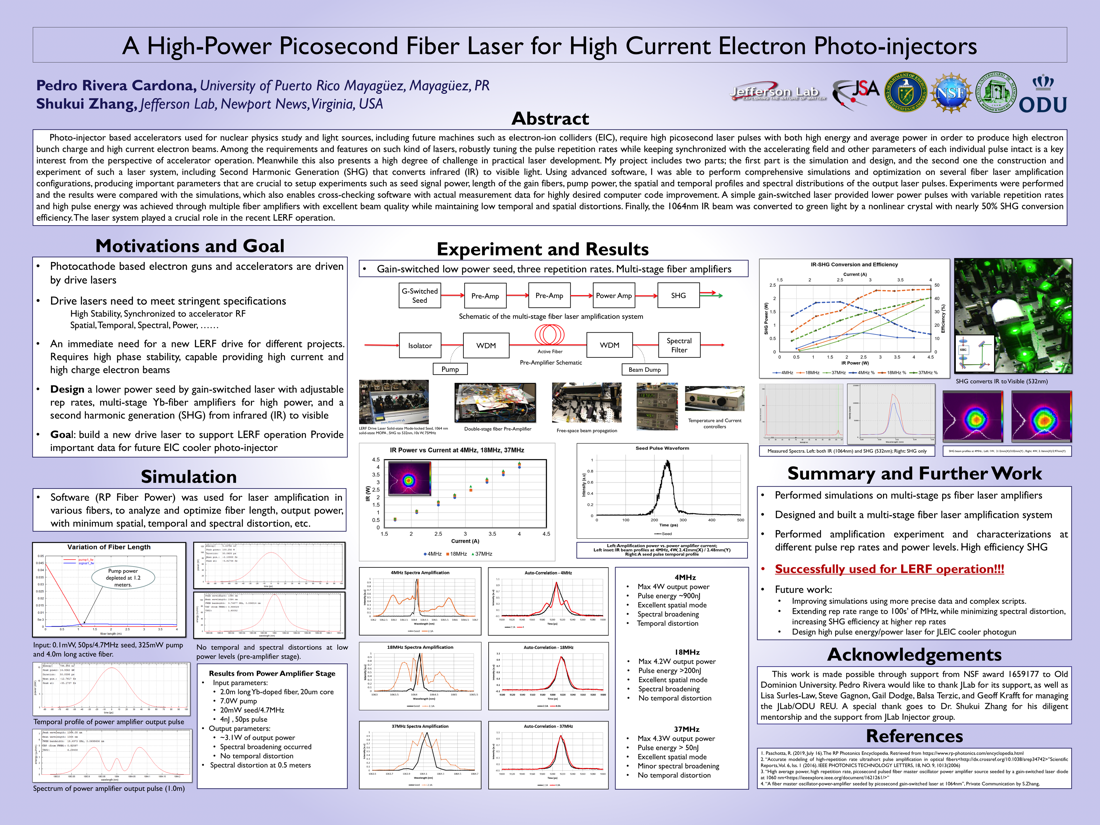Undergraduate Research at Jefferson Lab
Development of a High Power Picosecond Fiber Laser for High Current Electron Photo-Injectors
Student: Pedro E. Rivera-Cardona
School: University of Puerto Rico Mayaguez
Mentored By: Shukui Zhang
Photo-injector based accelerators used for nuclear physics study and light sources, including future machines such as electron-ion colliders (EIC), require high picosecond laser pulses with both high energy and average power in order to produce high electron bunch charge and high current electron beams. Among the requirements and features on such kind of lasers, robustly tuning the pulse repetition rates while keeping synchronized with the accelerating field and other parameters of each individual pulse intact is a key interest from the perspective of accelerator operation. Meanwhile this also presents a high degree of challenge in practical laser development. My project includes two parts; the first part is the simulation and design, and the second one the construction and experiment of such a laser system, including Second Harmonic Generation (SHG) that converts infrared (IR) to visible light. Using advanced software, I was able to perform comprehensive simulations and optimization on several fiber laser amplification configurations, producing important parameters that are crucial to setup experiments such as seed signal power, length of the gain fibers, pump power, the spatial and temporal profiles and spectral distributions of the output laser pulses. Experiments were performed and the results were compared with the simulations, which also enables cross-checking software with actual measurement data for highly desired computer code improvement. A simple gain-switched laser provided lower power pulses with variable repetition rates and high pulse energy was achieved through multiple fiber amplifiers with excellent beam quality while maintaining low temporal and spatial distortions. Finally, the 1064nm IR beam was converted to green light by a nonlinear crystal with nearly 50% SHG conversion efficiency. The laser system played a crucial role in the recent LERF operation.

Citation and linking information
For questions about this page, please contact Education Web Administrator.
